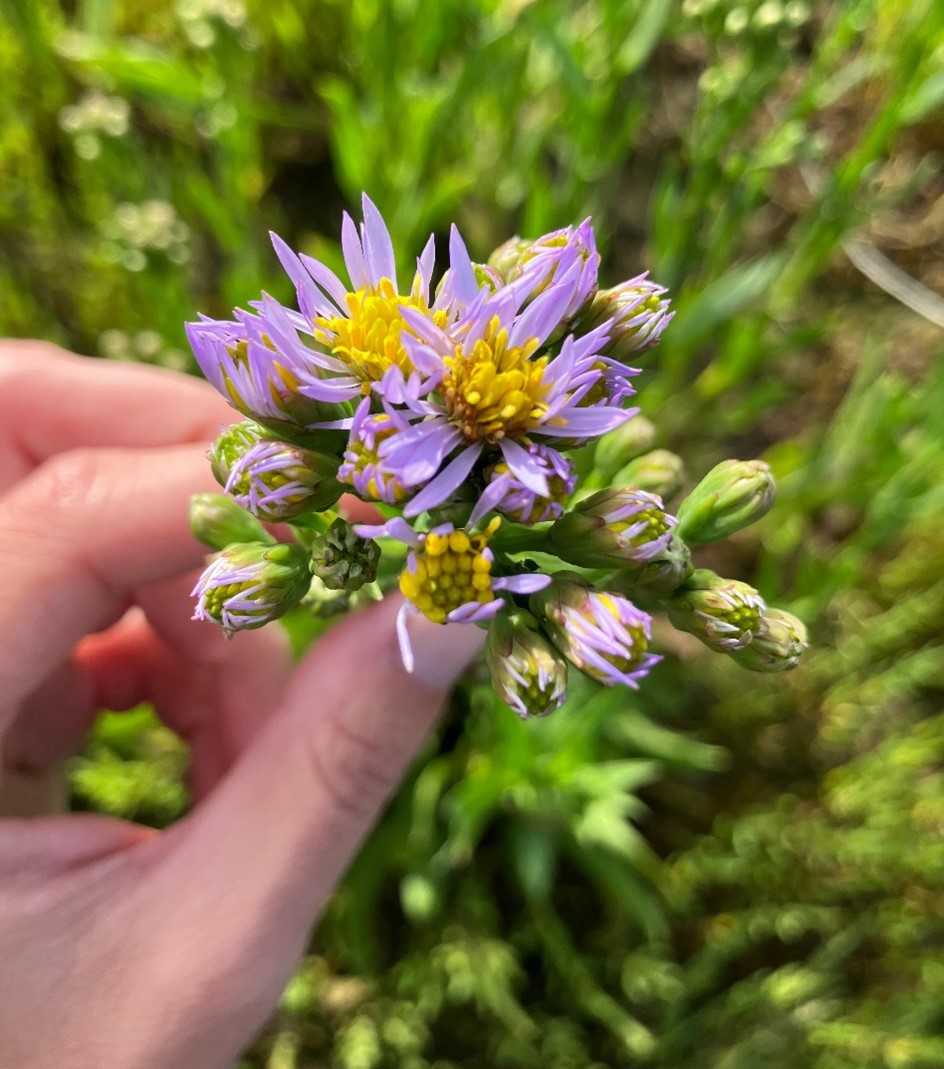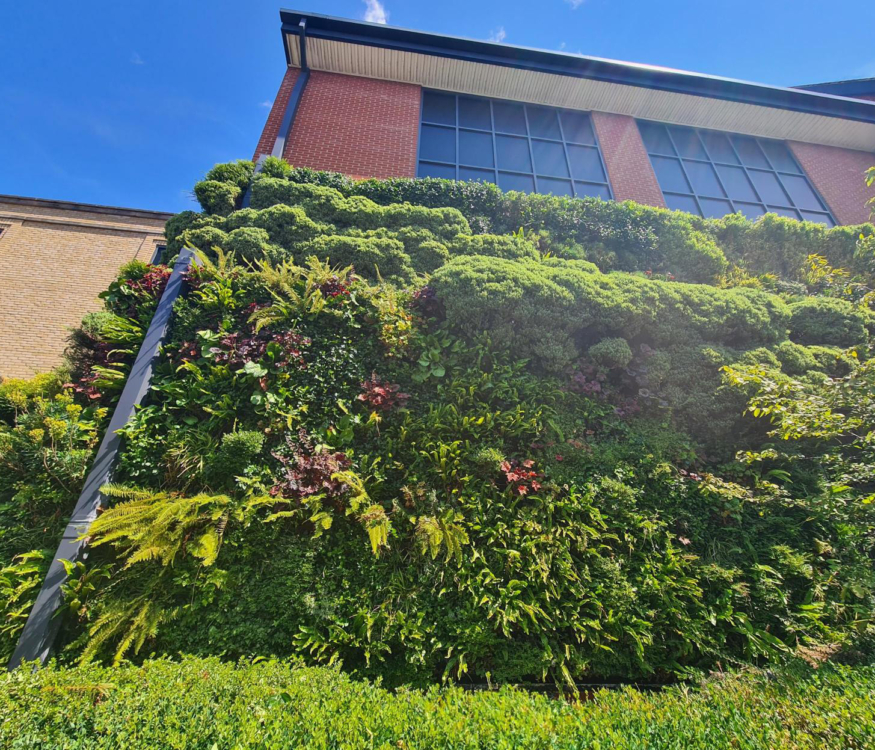All Biotecture employees are entitled to one volunteer day a year. This year our Sales Administrator Milly Manley used her volunteer day to help out at RSPB Pagham Harbour. In this blog she shares her experience:
For my volunteer day I offered to help survey for the Sea aster bee (Colletes halophilus). I’m a bit of a bee enthusiast but had never heard of the Sea aster bee, so enjoyed the chance to learn all about it and its unique ecology. Sea aster (Aster tripolium), the preferred pollen and nectar source of this particular bee, is a pretty lilac daisy-type flower that can be found in coastal saline habitats. It flowers in late summer to autumn, peaking in September, and is abundant at RSPB Pagham Harbour. The Sea aster bee aligns its emergence with the flowering of the aster, with males appearing first around August and females typically appearing in September when the aster is at its best.

The Sea aster bee is particularly at risk from rising sea levels and coastal development. Like many other coastal species of plant, invertebrate and bird – ‘coastal squeeze’ means there is less room for wetland specialists to find homes, feed, overwinter, breed and thrive. Protecting and maintaining these habitats is crucial to the survival of many coastal specialists, such as Ringed plover, Lapwing, and Brent geese.
As a solitary mining bee, it incredibly burrows holes in which to nest below the tide line, meaning foraging occurs only at low tide. With bee surveys best carried out between 11am and 3pm when the day is warmest, the tidal aspect adds another challenge when looking for the sea aster bee.
One part of the reserve we were surveying, known as Medmerry, is part of a planned sea defence breech, meanly salty lagoons were created on purpose in order to provide more habitat for wading birds. However, with this came the risk of losing some sandy banks which were previously ideal for the sea aster bee to burrow in. I took my volunteer day in 2 halves in order to do 2 surveys at low tide alongside RSPB Assistant Warden, Luke. During the first, it was fairly windy, not so warm, and we spotted a few bumblebees, honeybees and hoverflies but not much else – and no Sea aster bees. The Sea aster was largely brown, past it’s best and already gone to seed in some places. I surveyed again at a weekend in similar conditions with similar results, which was disappointing. That said, in conservation, surveying and finding nothing is just as useful as recording plentiful observations. Decisions in habitat management can be based on this data in order to create a more appropriate habitat for the target species.

On my second half volunteer day, it was a little warmer, the sea aster was much more vibrant and predominantly in bloom, and within ten minutes we had potted our first possible Sea aster bee! Over the next few hours we had 9 other sightings. We can say we are fairly certain that this was the Sea aster bee, but as it has a strikingly similar cousin active at the same time – the Ivy bee – we cannot be sure until this has been verified by an expert.

The likely sighting of the Sea aster bee here at RSPB Pagham Harbour means that the breech may not have had a detrimental effect on the bees’ access to sandy banks near enough to Sea aster. It also means that a more comprehensive survey will take place next year and the site will be carefully managed to ensure conditions remain optimum for this marvellous bee!
Other good sightings seen while surveying – an Osprey (fish-eating bird of prey) – at the start of it’s migration back to West Africa, a Peregrine, a Sparrowhawk, a Buzzard, a Spoonbill, Painted lady (butterfly) and Clouded yellow (butterfly)!




